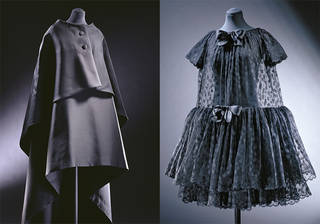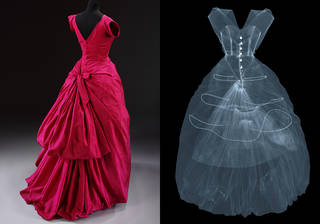Known as 'The Master' of haute couture, Cristóbal Balenciaga was one of the most innovative and influential fashion designers of the last century. His exquisite craftsmanship and pioneering use of fabrics revolutionised the female silhouette, setting the tone for modern fashion.
Balenciaga: Shaping Fashion is the first UK exhibition to explore the work and legacy of the Spanish couturier, showcasing over 100 garments and hats crafted by Balenciaga, his protégés and contemporary designers working in the same innovative way today. It examines Balenciaga's work from the 1950s and 1960s – arguably the most creative period of his career – when he dressed some of the most renowned women of the age and became revered by his contemporaries, including Christian Dior and Coco Chanel.

Haute Couture is like an orchestra whose conductor is Balenciaga. We other couturiers are the musicians and we follow the direction he gives.
The exhibition features examples of Balenciaga's revolutionary shapes from this period – the tunic, sack, baby doll and shift dresses – all of which remain style staples today. Other highlights include ensembles made by Balenciaga for Hollywood actress Ava Gardner, dresses and hats belonging to socialite and 1960s fashion icon Gloria Guinness, and pieces worn by one of the world's wealthiest women, Mona von Bismarck, who commissioned everything from ball-gowns to gardening shorts from the couturier.

Alongside these iconic garments are archive sketches, patterns, photographs, fabric samples and catwalk footage, providing a unique insight into Balenciaga's salons and workrooms. The results of new, forensic investigations into the garments – including a collaboration with X-ray artist Nick Veasey and a digital pattern making project with the London College of Fashion – reveal the hidden details and processes which make Balenciaga's work so exceptional.

The second part of the exhibition explores the lasting impact of Balenciaga, tracing his influence through the work of over 30 fashion designers across the last 50 years. Pieces designed by Balenciaga's former apprentices André Courrèges and Emanuel Ungaro demonstrate a signature minimalist aesthetic, recently revived by Phoebe Philo for Celine and in the strong lines of J.W. Anderson. Balenciaga's perfectionism and attention to detail are reflected in the work of Hubert de Givenchy and Erdem. His pattern cutting and explorations with volume can be seen in the work of Molly Goddard and Demna Gvasalia, while his creative use of new materials is referenced in the work of former Balenciaga creative director Nicolas Ghesquière.

The V&A has the largest collection of Balenciaga in the UK, initiated in the 1970s by the photographer Cecil Beaton, Balenciaga's longstanding friend. Balenciaga: Shaping Fashion marks the centenary of the opening of Balenciaga's first fashion house in San Sebastian, Spain, and the 80th anniversary of the opening of his famous fashion house in Paris.

